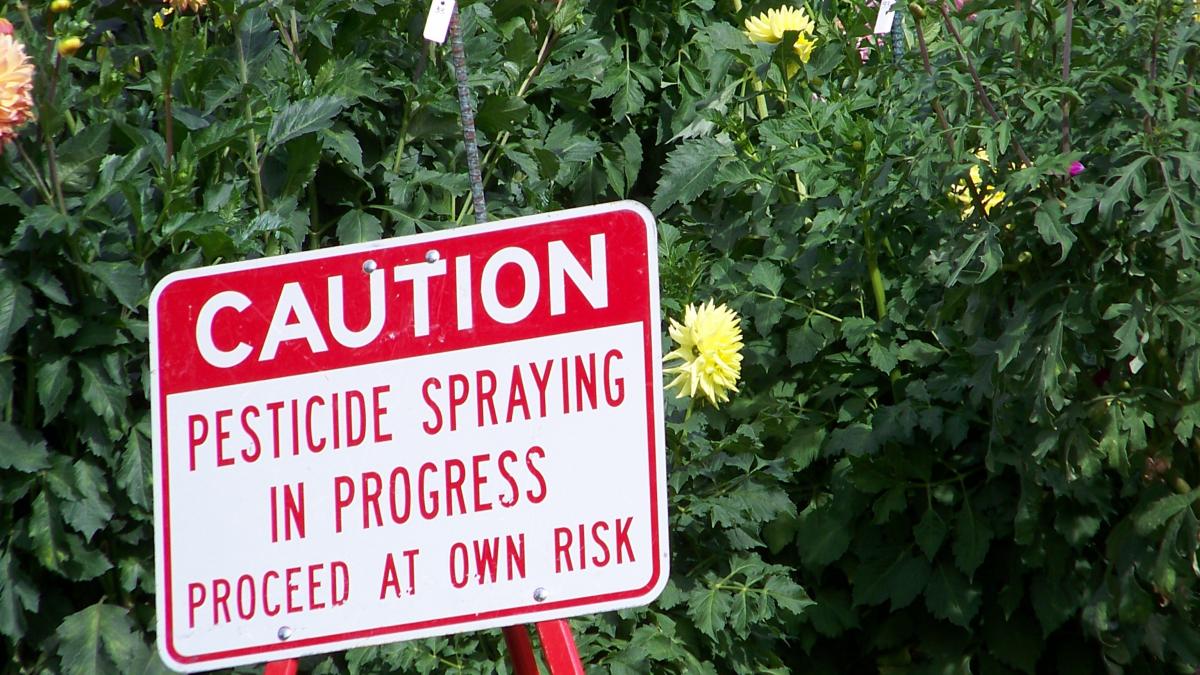
For nearly 50 years, a statistical omission tantamount to data falsification sat undiscovered in a critical study at the heart of federal regulations of one of the most controversial pesticides in America.
Chlorpyrifos, a widely used insecticide created in the late 1960s by Dow Chemical Co., has been linked to serious health problems, especially in children. It has been the subject of many lawsuits and banned in Europe and California.
The US Environmental Protection Agency (EPA) itself nearly banned the chemical, but in 2017, the Trump administration backtracked and rejected EPA’s own recommendation to take chlorpyrifos off the market. The EPA plans to reconsider the chemical’s use by 2022.
In February, the largest producer of chlorpyrifos, Corteva Agriscience (which owns Dow), said it would stop making the chemical because of slumping sales, not out of safety concerns. Corteva has kept up a running defense of the chemical.
Now researchers from the University of Washington Department of Environmental & Occupational Health Sciences (DEOHS) report that decades of exposure to chlorpyrifos and all the political wrangling and lawsuits surrounding it might have been averted if a 1972 study funded by Dow Chemical had been adequately reviewed by the EPA.
The new study was published in the journal Environment International.
Data inexplicably omitted
DEOHS Professor Lianne Sheppard, the study’s lead author, explained that the 1972 “Coulston study” established erroneously how much of the chemical a human could be exposed to before adverse effects showed up in a body’s chemistry.
When Sheppard re-ran the study data using the same longhand statistical analysis as the original, she discovered that key data used in two other level-of-exposure tests in the same study had been inexplicably left out of the central exposure question.
Consequently, the EPA used the wrong safe exposure limit, also known as the “no observed adverse effect level.”
As the uses for chlorpyrifos expanded in the 1970s and became approved for in-home use in the 1980s and ’90s, the EPA set allowable human exposure levels at the one described as safe in the Coulston study—0.03 mg/kg per day.
Calling out research misconduct
“This has huge public health implications,” said Sheppard. “This study was the basis of policy for over 15 years, and because it concluded that the ‘no observed adverse effect level’ was more than twice as high as it should have been, the standard was a lot less protective than it should have been.”
In the new study, the researchers stated: “Such an omission of valid data without justification is a form of data falsification that violates all standard codes of ethical research practice and is classified as outright research misconduct. It is tragic that an omission of valid data from the analysis of the Coulston study may have adversely impacted public health.”
EPA failed to use modern data analysis methods
Sheppard pointed out two other critical problems with this study that made its results more susceptible to producing a higher level of “safe” exposure.
In short, because of how the Coulston study was designed, investigators were not able to compare the test results of the three groups treated with different doses of chlorpyrifos within the same analysis.
“This meant that their original analysis was much less powerful than it could have been if it had put all the dose groups together in one analysis,” Sheppard said.
Secondly, Sheppard points out, the EPA did not reanalyze the data when better statistical methods and software tools became available in the 1980s—well within the window when the EPA was using the Coulston study to set acceptable exposure limits for chlorpyrifos.
These longitudinal data analysis tools allow a more direct assessment of how accumulation of the chemical would affect the body’s chemistry over time, while also being able to accommodate the poor study design.
Had the Coulston data been analyzed using more modern techniques, as UW researchers did in their new study, EPA’s reviewers would have seen that chlorpyrifos’ effect on the body’s chemistry accumulated over time and that the study had not discovered the “no observed adverse effect level” used by regulators to set safe levels of exposure.
“All kinds of approvals were allowed for uses that never should have been allowed—and quite well wouldn’t have been allowed—if the Coulston study authors had properly reported their results,” said Sheppard.
Study removed from review process at Dow's request

Co-author Richard Fenske, DEOHS emeritus professor, said it's a mystery why the 1972 Coulston study was not thoroughly examined even as the maturing EPA began reviewing such studies more rigorously through its inaugural 2006 Human Studies Review Board.
But when the EPA formally set out to review human-subject studies like the Coulston study, Dow, the maker of chlorpyrifos, specifically removed the study from that process, said Fenske, who was a member of the initial review board.
“You can speculate why they did,” said Fenske, “but they formally asked the Human Studies Review Board not to review this study, and so it was never reviewed.”
Fox guarding the henhouse?
Fenske has worked for decades on research about insecticides, including a 1990 study of chlorpyrifos residue left behind after an in-home spray treatment. That study found spray treatments could expose children to unsafe levels of the chemical.
“It is a cautionary tale that data being submitted for pesticide registration may not have undergone proper review, and that could be happening today,” Fenske said.
Sheppard added that “at a minimum,” studies funded by companies developing a chemical that’s under study must be opened to outside scrutiny.
“I’m not sure industry should be doing these studies at all," she said. "I don’t think the fox should be guarding the henhouse.”
Co-authors include Seth McGrew, who worked on the study while a DEOHS graduate student.




